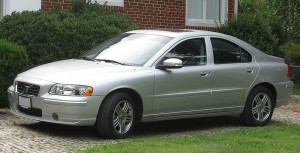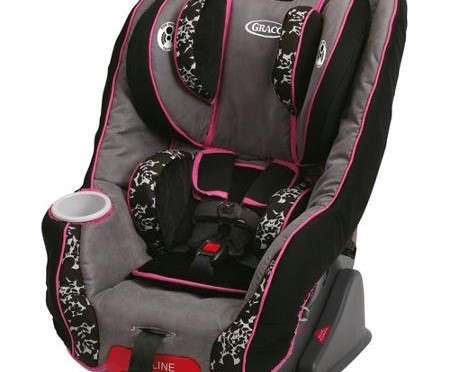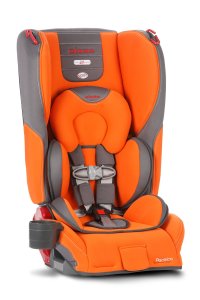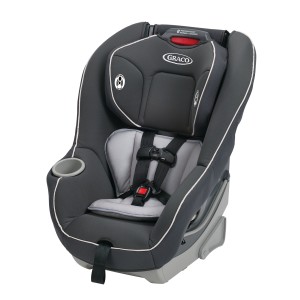The Buick Encore and its GM twin, the Chevrolet Trax, are two of the best selling new entries in the hotly contested US small SUV and crossover market. Known abroad as the Opel Mokka and Vauxhall Mokka, it competes in the US with a range of compact and subcompact crossovers like the Honda CR-V, Toyota RAV4, Nissan Rogue, Mazda CX-5, Subaru Forester, Ford Escape, Jeep Compass, Kia Sportage, Hyundai Tuscon, Jeep Renegade, and Jeep Patriot. The Encore / Trax does very well from a safety standpoint on paper, boasting good small overlap, moderate overlap, and side crash scores, as well as a good roof score, side airbags, and ESC. But how does it do as a family vehicle?
For me, a successful family vehicle is one that can fit 3 car seats across the back row. Not every family has children, and not every family has 3 of them, of course, but this is a question that comes up time and time again on the Internet, and I’m on a quest to answer it for every vehicle sold in the United States.
Given the small size of the Encore / Trax, I knew it was going to be a challenge to fit 3 car seats across the back, but with the success I’ve had in a number of other small cars and SUVs, I was more than willing to give it a try. The bad news is that there aren’t too many seats that will fit side to side or front to back. The good news is that there are several that will, and they aren’t all expensive ones. Before we take a look at which seats would and wouldn’t work, it’s worth reviewing some essential elements of car seat safety.
The safest configuration we know of when it comes to vehicle safety is rear-facing. This goes for adults as well! Rear-face your infants, toddlers, and preschoolers for as long as possible (ideally until 4!), before forward-facing them in harnessed convertible or combination seats (ideally until 8!). Once they outgrow their harnessed seats, it’s best to keep them restrained in high-back boosters until they’re physically and psychologically ready to use adult seat belt systems (which typically happens between 10 and 12). We want our little ones in the safest positions we know of for as long as possible to give them the greatest advantages in a collision.
With these guiding principles, I made it my job to figure out which car seats were most likely to work in the Encore I had available. All of the information below applies equally to the Encore and the Trax, which are more or less identical in their back seat configurations. It’s my goal to make this list the most thorough on the Internet. If you find the list helpful when shopping for car seats, you can shop through my Amazon link below. I’ll add more seats as I test them over time.
You can access the complete 3 across guide for every vehicle here and the complete list of recommended seats here. The Canadian car seat guide is here. 3 across car seat images are courtesy of Wikipedia.
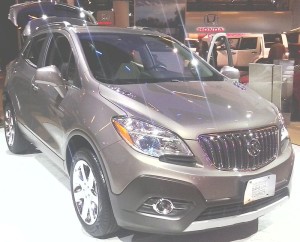 2013, 2014, 2015, 2016, 2017 Buick Encore / Chevrolet Trax
2013, 2014, 2015, 2016, 2017 Buick Encore / Chevrolet Trax
Guaranteed 3 across installations:
Clek Fllo (x3).
Clek Foonf (x3).
Diono Radian R120 (x3).
Diono Radian R100 (x3).
Diono Radian RXT (x3).
Chicco KeyFit 30 (x3).
Combi Coccoro (x3).
Clek Fllo, Diono Radian / RXT, Diono Radian / RXT.
Chicco KeyFit 30, Clek Fllo, Chicco KeyFit 30.
Tips and Tricks:
The current and only generation of the Buick Encore / Chevy Trax is just under 169 inches long and just under 70 inches wide. To put it simply, it’s a very compact crossover. This means that not only will you struggle with side to side installations; you will also find it a challenge to get front-to-back space.
Using your seat belts instead of the LATCH system will be essential to make the side to side issue work with the seats I’ve listed above, while consulting my list of convertibles that leave you leg room will help with the second issue of front-to-back space.
For example, if you’d like to use one of the Radians, you’ll definitely want to consider the angle adjuster, or you’re not going to have much front-passenger space, and it’ll be a less than enjoyable experience for tall drivers or passengers.
If you find the information on car safety, recommended car seats, and car seat reviews on this car seat blog helpful, you can shop through this Amazon link for any purchases, car seat-related or not. Canadians can shop through this link for Canadian purchases.
The Safest Affordable Used Cars for Teen Drivers, 2016 Edition
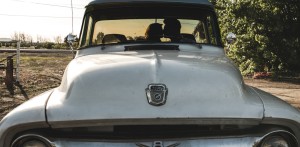 Last year, the IIHS published their first list of used car recommendations for teenagers, and I explained here why the list was less helpful to most parents than it could have been. While well-meant, the article was tone-deaf to the economic realities of the country at best and destructive by enabling misconceptions and vehicular arms races at worst.
Last year, the IIHS published their first list of used car recommendations for teenagers, and I explained here why the list was less helpful to most parents than it could have been. While well-meant, the article was tone-deaf to the economic realities of the country at best and destructive by enabling misconceptions and vehicular arms races at worst.
Strong words, I know. Let’s look at that a bit more closely, and then I’ll have my recommendations for safe, affordable used cars, SUVs, minivans, and pickup trucks for teen drivers, based on vehicle availability in 2016.
Why was the previous IIHS analysis of safe teen vehicles a poor one?
The main reason for its relative unhelpfulnesss was because a.) it ignored the realities of how much money parents were actually spending on vehicles for their teenage drivers, b.) it misled readers into believing that all teenage drivers were the most dangerous (they’re not), and entirely avoided the greater issue that teenage male drivers are the most dangerous on the road, and c.) it encouraged a vehicular arms race by telling parents to buy large and heavy vehicles for the least experienced drivers on the road.
So if there were so many issues with the 2014 article, why am I looking at their 2015 report? Well, the IIHS does provide a lot of good information on crashworthiness, and I was hopeful they would provide far more useful, accurate, and relevant information to parents this year on safe and budget-friendly car choices for adolescent drivers. Let’s see how they did.
1. How much are parents spending on cars for their teenagers, and do IIHS recommendations address these amounts?
 Last year in 2014, the IIHS reported the median amount spent by parents on vehicles for teens was $5,300. Adjusting for inflation, this yields a sum of $5,327 in 2015. The IIHS states, once again, that parents should spend more money for more safety. Of course, the median household income in 2014, per the US Census Bureau, was $51,339, which tends to be the same from year to year. Furthermore, median household debt in 2010 was $3,300, which is unlikely to have changed significantly in the last few years. Oh, and college, which most parents aspire their children attending, still costs around $23,410 if you’re aiming for average costs as an in-state student at a public 4-year school.
Last year in 2014, the IIHS reported the median amount spent by parents on vehicles for teens was $5,300. Adjusting for inflation, this yields a sum of $5,327 in 2015. The IIHS states, once again, that parents should spend more money for more safety. Of course, the median household income in 2014, per the US Census Bureau, was $51,339, which tends to be the same from year to year. Furthermore, median household debt in 2010 was $3,300, which is unlikely to have changed significantly in the last few years. Oh, and college, which most parents aspire their children attending, still costs around $23,410 if you’re aiming for average costs as an in-state student at a public 4-year school.
As a result, urging parents to spend more is unlikely to occur for a variety of reasons. So let’s look at the IIHS’ 2015 vehicle list and see how relevant it is for median parents:
They tag 81 vehicles as “best” choices and 68 as “good” choices, for a total of 149 vehicles. Of these, ideally, at least 74 should be below $5,327, with the other half above that amount, if this list is truly designed to help parents where they are, rather than where the IIHS would like them to be financially.
How many vehicles fall below the median?
Nineteen.
In other words, just under 13% of vehicles, or 19 out of 149, show up at or below the median price. An ideal list would feature 50% of vehicles in that range. Unfortunately, the list this year, much like the list last year, remains out of reach for the vast majority of American families.
2. Does the IIHS paint an accurate report of how dangerous teenage drivers are, who the most dangerous teens are, and how to reduce their danger?
Last year in 2014, the IIHS urged parents to consider “the risks teens take” and pay more to keep them safe. However, as I noted, the groups most likely to be involved in fatal crashes are teenage males between 16 and 19, followed by young men between 20 and 29. Teenage girls are safer than *all* male drivers until male drivers turn 30. The IIHS ignored their own data when omitting this information last year. Did things change this year?
Unfortunately not. The IIHS did recommend parents choose vehicles without high horsepower, with a lot of weight, and with ESC, but said nothing about reducing the amount of unsupervised driving teenage males were allowed or delaying their acquisition of licenses. Is it a good idea to put teens in vehicles with ESC? Yes, the same way it’s a good idea to put everyone in vehicles with ESC. Is it a good idea to avoid high horsepower vehicles for teens? Yes, for the same reason it’s a good idea for adults (speed kills). Is it a good idea to suggest teens drive giant vehicles to keep them safe? I’ll tackle that in a moment.
But finally, is it helpful for the IIHS to continue to paint all teens with a broad brush when the most dangerous drivers are, quite plainly, teenage males?
No; there is much left unsaid here, and an opportunity was missed.
3. Does the IIHS continue to encourage destructive policies for all road users by encouraging parents to buy large and heavy vehicles for the least experienced drivers on the road?
Last year in 2014, the IIHS directed parents to choose bigger and heavier vehicles for their teenage drivers, and explicitly stated they wouldn’t recommend minicars or small cars to parents of teenagers. I countered that this advice only made the roads more dangerous for all drivers by encouraging a vehicular arms race through telling parents to buy large and heavy vehicles for the least experienced drivers on the road. Did this change this year?
Unfortunately not. The IIHS repeats their “every driver for him/herself” mantra by urging parents outfit their teenage drivers with vehicles capable of doing more harm to others by doing less harm to them by extension. I understand the logic behind this thought process, but it’s ultimately a futile one.
If everyone follows the advice and drives heavy vehicles, heavy vehicles offer no advantages to anyone inside them, while making the roads that much more dangerous for people who aren’t in any vehicles, such as cyclists, motorcyclists, and every single pedestrian in the country. And whether we acknowledge it or not, all of us are pedestrians at one point or another in the day, even if only when walking to and from our vehicles when leaving or arriving our homes, places of work, of food, of commerce, of worship, and so on.
Am I stating parents should only buy tiny cars for their teenage drivers? Not necessarily. But I am absolutely stating that parents should not buy large vehicles for their children, or for themselves, if not absolutely necessary.
It is the height of irresponsibility to buy vehicles that increase the already-grandiose sense of invincibility felt by far too many teenage males (which, of course, is what leads to their having a far higher rate of involvement in fatal collisions than teenage females or males of any other age before 80).
To put it frankly, the IIHS’ recommendation to avoid a number of very safe, practical, affordable, and fuel-friendly vehicles (e.g., a used Prius that yields 50 mpg while having a driver death rate better than dozens of 4000-6000 lb pickup trucks and SUVs) is an unpleasant one for a number of ethical, environmental, financial, and humanitarian reasons.
This list isn’t helpful. Let’s make one that is.
If the IIHS is unhelpful in choosing safe and budget-friendly vehicles for teenagers, which ones would you recommend in 2016, Mike, and why?
At this point, it’s clear that the IIHS’ agenda isn’t necessarily the most relevant or helpful one for parents interested in keeping their teenagers safe and financially solvent without increasing the risks they pose to others on the road (of all ages). My recommendations are based on those assumptions.
As a result, I primarily include mini (subcompact) and small (compact) cars and SUVs, add mid-sized cars, and completely leave out mid-sized and larger SUVs, minivans, and pickup trucks, which are unnecessary for most teenagers (who ideally should either be driving with parents or driving alone, and certainly shouldn’t be driving with other teens). Furthermore, all of my recommendations are around the median price parents are spending ($5,327), and all of my recommendations include vehicles with side airbags, ESC, and good frontal and good or acceptable side crash scores. All prices are based on private party costs in November 2015 in the Chicago metro area.
The safest affordable mini cars and subcompacts for teenagers in 2016
The Yaris is a good choice for teens on a budget who prioritize fuel economy; the EPA ratings are 29/35 city/highway in the automatic and 29/36 in the manual. From 2010 onward, ESC is standard, while side airbags are standard from 2009 onward. It has both good frontal and side crash test scores.
The safest affordable small cars and compacts for teenagers in 2016
The Focus sedan is another good choice for parents interested in safety, affordability, and fuel economy. It’s rated for 24/34 in the automatic and 24/35 in the manual, and comes standard with side airbags and ESC from 2010 onward, or simply with side airbags from 2008 onward. It has a good frontal score but only an acceptable side score.
The safest affordable small SUVs and crossovers for teenagers in 2016
The CR-V, along with the Yaris, is one of the two most reliable vehicles on this list, and is highly recommended for parents who would like vehicles their teens can pay to repair due to low maintenance costs. It comes with ESC and side airbags as standard features from 2005 onward. It has both good frontal and side crash test scores and is rated at 20/26 in the automatic FWD. It’s also one of only 2 vehicles on the list with an AWD option (the other is the S60).
The safest affordable mid-sized cars for teenagers in 2016
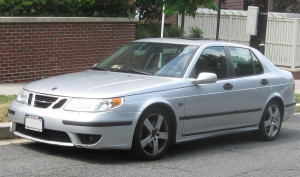 2004+ Saab 9-3
2004+ Saab 9-3
The Saab 9-3 is the most affordable vehicle on this list to buy, although probably not the cheapest to maintain. It has come with both ESC and side airbags since 2003, which is earlier than any vehicle on this list and the vast majority of vehicles ever made. It has both good frontal and side crash test scores as of 2004, and is rated at around 18/27 in the automatic.
Finally, the S60 is another good choice for parents interested in safety and affordability. Like the 9-3, however, it’s likely to cost more to maintain over time. It has good frontal and acceptable side crash test scores and has come with ESC since 2007 and side airbags since 2001. It is rated at around 19/28 in the best of the automatic transmissions, and is also available in AWD.
I hope you’ve found this article helpful and informative as a parent interested in finding safe and affordable transportation for you teenage child. We can’t protect them from everything, but we can certainly keep them safer without going into debt or making the roads less safe for others in our communities.
—
If you find the information on car safety, recommended car seats, and car seat reviews on this car seat blog helpful, you can shop through this Amazon link for any purchases, car seat-related or not. Canadians can shop through this link for Canadian purchases.
Graco Fit4Me Review + Size4Me, Contender Comparisons
The Graco convertible car seat clones are among my favorite car seats on the market. Whenever parents email me asking for recommendations to help them practice extended rear-facing and note that they’re willing to spend whatever it takes to make it happen, I tend to recommend seats like the Fllo, Foonf, Rainier, or Pacifica, which allow you to rear-face until 50 pounds.
However, if they’re on tighter budgets, I steer them toward seats like the My Size 65, Head Wise 70, Size4Me 65, and Contender, because they cost less than $200 on Amazon and allow parents to rear-face most children until they turn 4. And given the fact that most parents are still turning their children forward-facing between 1 and 2, any seat that helps make parents make a safer decision for their children is a seat worth recommending over and over again.
The Fit4Me 65 is yet another addition to the Graco stable of 40-pound rear-facing convertible car seats, and after taking a close look at one for the past week (they’re available for a song on Amazon with free shipping), I’ve decided that this clone is as good as any of the others when it comes to inexpensive ways to practice extended rear-facing. It’s a great convertible car seat that won’t break the bank and that will also let you fit 3 across in a number of vehicles.
Graco Fit4Me 65 – What’s the big deal?
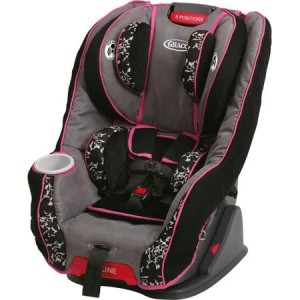 The Graco Fit4Me 65 is yet another great budget-friendly convertible car seat by child safety giant Graco. It features a lot in common with its other Graco clone siblings, with the biggest differences being limited to fabric print changes and price differences. Unlike the Contender, it does come with a pair of LATCH connectors, and unlike the Size4Me or My Size, it comes with a ball level indicator on the side to give you a more accurate way of determining your recline angle. Besides these basic differences, it’s just about the same seat.
The Graco Fit4Me 65 is yet another great budget-friendly convertible car seat by child safety giant Graco. It features a lot in common with its other Graco clone siblings, with the biggest differences being limited to fabric print changes and price differences. Unlike the Contender, it does come with a pair of LATCH connectors, and unlike the Size4Me or My Size, it comes with a ball level indicator on the side to give you a more accurate way of determining your recline angle. Besides these basic differences, it’s just about the same seat.
When you get to the heart of it, the Graco Fit4Me is a convertible car seat that features very high height limits, which means that the majority of children will be able to sit in it in a rear-facing position until they outgrow the seat rear-facing at 40 pounds. Because it’s a convertible seat, it can then be used in a forward-facing configuration for another 25 pounds of weight.
Since the Fit4Me, like its clone seats, features a wide range of harness strap height options and a low 4 pound starting weight limit, you can buy the Fit4Me online via Amazon, install it in your family vehicle (or better yet, install one in each vehicle where you plan on transporting your child), and use it to bring your baby home from the hospital (or birthing clinic). And because the Fit4Me comes with a 7 year lifespan, you’ll actually be able to take advantage of the 40-pound rear-facing and 65-pound forward-facing weight limits, presuming your child doesn’t outgrow it by height first.
Let’s dig into the details of the seat together.
Graco Fit4Me 65 Limits for Weight and Height
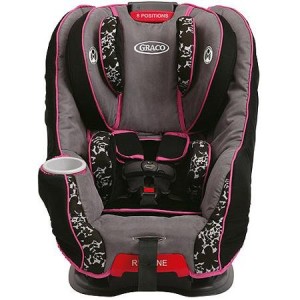 Rear-facing: 4 to 40 pounds. You’ll want to rear-face as close to that 40 pound limit as you can before you turn your child forward-facing, as the rear-facing configuration is the safest position for a child in a moving vehicle. There is a 1″ rule that states that your child’s head needs to stay below 1″ of the head rest when the head rest is extended to its maximum position. Because the shell height is a full 28″ tall when it’s fully extended, just about every child out there will be able to reach 40 pounds in weight before outgrowing the seat rear-facing by height. This is one of the many reasons I love the Graco clones.
Rear-facing: 4 to 40 pounds. You’ll want to rear-face as close to that 40 pound limit as you can before you turn your child forward-facing, as the rear-facing configuration is the safest position for a child in a moving vehicle. There is a 1″ rule that states that your child’s head needs to stay below 1″ of the head rest when the head rest is extended to its maximum position. Because the shell height is a full 28″ tall when it’s fully extended, just about every child out there will be able to reach 40 pounds in weight before outgrowing the seat rear-facing by height. This is one of the many reasons I love the Graco clones.
Forward-facing: 20 to 65 pounds. There is a 49″ height limit when children are forward-facing. While Graco allows you to forward-face your children from a minimum age of 1, I recommend as a reader of The Car Crash Detective that you aim to delay forward-facing for as long as you can in this, or in any other seat, and then continue to forward-face for as long as necessary before switching to a booster seat. There’s no need to rush forward-facing, especially in a seat that actually allows you to get several years out of it in the rear-facing configuration.
Buy the Graco Fit4Me 65 on Sale with Free Shipping at Amazon here.
Dimensions and Key Stats of the Graco Fit4Me
The Fit4Me’s shell is 18.5″ wide, while the seat itself is close to 23.5″ in height and 22″ long. The seat can be used for 7 years from the date of manufacture, and the harness height ranges from 7″ at the lower end with the included infant insert to 17.5″ at the top. You can choose from 8 head rest positions and a no-rethread harness is present, You can choose from 2 crotch buckle settings, with one 4.5″ from the back of the seat and the other 6″ from the seat back. The Fit4Me weights 19 pounds, or 3 pounds more than the Contender, but about the same as the other Graco twins. Because it’s just over 18″ wide, you’ll be able to fit it in a range of small cars and SUVs, as well as larger ones, when it comes to 3 across installations. Check out the 3 across car seat guide for more ideas about seats that are likely to fit in your vehicle.
There is a lower LATCH anchor weight limit of 45 pounds that decreases to 42 pounds if the seat was made before 2015; check your seat’s manufacturing date to know for sure.
Using the Graco Fit4Me 65
The Graco Fit4Me Compared to the Size4Me, Head Wise, My Size, and Contender: Similarities and Differences
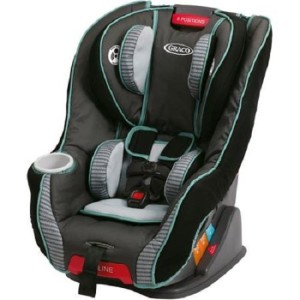 Out of the box, the Fit4Me looks nearly identical to the other Graco twins. To be honest, the biggest differences you’re likely to notice are that it’s available in slightly different colors and is molded ever-so-slightly differently than the other seats. Compared to the Contender, it features dedicated LATCH straps for both forward- and rear-facing, and it also has a lower starting weight limit of 4 pounds vs 5 pounds, which might make it a better choice than the Contender for parents of potentially smaller newborns. On the other hand, it does weigh a few pounds more than the Contender.
Out of the box, the Fit4Me looks nearly identical to the other Graco twins. To be honest, the biggest differences you’re likely to notice are that it’s available in slightly different colors and is molded ever-so-slightly differently than the other seats. Compared to the Contender, it features dedicated LATCH straps for both forward- and rear-facing, and it also has a lower starting weight limit of 4 pounds vs 5 pounds, which might make it a better choice than the Contender for parents of potentially smaller newborns. On the other hand, it does weigh a few pounds more than the Contender.
Installing the Graco Fit4Me 65
Installation of the Fit4Me is the same as the process for the other Graco clones, which is typical for the installation procedures for most other convertible car seats out there. You can choose between using the seat belt or LATCH when rear-facing and can use the seat belt when forward-facing. In either case, whether rear-facing or forward-facing, and whether using the LATCH system or the seat belt system, it won’t take you much time and will simply depend on your needs and preferences.
I tend to prefer LATCH installations when installing single seats and seat belt installations when installing multiple seats, especially when aiming for 3 across car seat installations. A side ball indicator helps you find the correct recline angle, which can vary between 30 and 45 degrees.
Child Fit in the Graco Fit4Me 65
One of my favorite things about the Fit4Me is how easy it is to use with newborns. Generally, convertibles marketed with minimum weights of 5 pounds may fit average-sized newborns, but they might need a bit of additional padding to do so well. However, only seats that are rated for 4 pounds or below can be expected to do a good job with regular newborns, preemies and smaller-than-average newborns. The Fit4Me does a great job with all three, and I love it for that.
Keep in mind that when you use the Fit4Me with very young children, such as newborns, you’ll absolutely need to use the infant insert (body support) if your child’s shoulders don’t reach the lowest harness setting. Similarly, you can only use the infant insert while the Fit4Me is rear-facing, and the insert must never bunch or fold behind your child. Besides that, it’s just like any other insert.
I was able to achieve a good fit with a range of kids (and a bit of patience) between the infant stage and the elementary years. The Fit4Me comes with a no-rethread harness that’s adjustable up and down in several positions. There are a number of car seats out there, particularly in the budget range, that make you rethread your harness straps whenever you need to raise or lower your harness height. In the Fit4Me, as with all the Graco clones, there’s a red handle behind the child’s head that you hold, squeeze, and then move up or down. It makes it easy to find the right harness height and it also makes it easy to have multiple children use the same seat.
There are 8 positions to choose from, ranging from 8″ to 17.5″ at the top of the shell in terms of seated torso height. If you use the infant body support, the lowest harness setting drops to 7.” As I noted above, there is a built in level indicator in the side of the Fit4Me that lets you make sure you’ve got the correct recline set up. It’s a ball level indicator, which is much more obvious than lines or obtuse markings that resemble hieroglyphics.
Additional Bonuses of the Graco Fit4Me
Because the Graco Fit4Me is essentially the same seat as the Head Wise, Size4Me, My Size, and Contender, it has the same levels of flight-friendliness. In other words, it installs easily on airplanes and has FAA approval. The sticker’s in an awkward place, however, within the back of the seat shell. This means you’ll have a tough time showing it to the feds if you have a flight attendant, TSA agent, or anyone else along the way who questions you.
Why Buy the Graco Fit4Me 65?
At this point, we’ve discussed lots of neat features in the Fit4Me, but in the end, it all comes down to one question before you buy it–what makes it worth the money? Personally, I say the Graco Fit4Me is worth the money because it lets you rear-face to 40 pounds by weight and gives you the room in height to actually reach 40 pounds. First of all, the vast majority of kids in the US are turned forward-facing much too early. Part of this is because parents don’t know better, but part of it is simply because many seats run out of height room too quickly.
Because there’s a generous amount of headroom in the Fit4Me, the likelihood of pretty much every child reaching the 40 pound rear-facing limit is very high. And rear-facing is absolutely safer than forward-facing, which is why the Swedes, who have the best child safety record in the world, don’t forward-face their kids until they turn 4. Let’s learn from the folks who use best practices. Don’t fall into the trap of forward-facing your children between 1 and 2, the way the vast majority of parents in the United States currently do. Those extra years rear-facing are worth it, and it’s worth investing in a seat that makes that possible.
Keep in mind that there are several seats that will let you rear-face beyond 40 pounds. However, 40 is much better than 35 or 30 pounds, which are your limits in the vast majority of infant seats on the market. And the Fit4Me offers the advantage of greater side impact protection and does so while taking less out of your pocket than a lot of 40-pound-capable convertible car seats on the market.
Overall, the Graco Fit4Me is a quality, well-thought out seat that offers parents the opportunity to practice extended rear-facing without breaking the bank. It’s lighter, cheaper, just as safe, and offers you the ability to keep your children safe for several years on a shoestring budget. You can buy the Graco Fit4Me in Lacey and Flip here.
Unfortunately, it’s not yet available in Canada, but Canadians can buy a similar seat, the Boulevard ClickTight, here.
 If you find my information on best practices in car and car seat safety helpful, you can do your shopping through this Amazon link. Canadians can shop here for Canadian purchases. Have a question or want to discuss best practices? Join us in the forums!
If you find my information on best practices in car and car seat safety helpful, you can do your shopping through this Amazon link. Canadians can shop here for Canadian purchases. Have a question or want to discuss best practices? Join us in the forums!
Best Car Seat Deals – Amazon’s 2015 Cyber Monday Sales
After reviewing hundreds of car seats, strollers, and child safety gear, I’ve spent enough money to realize when I’m getting a good deal and when I’m not. For me, Amazon is the place to be when it comes to making the most of my money, as every dollar I save shopping there helps me with the car seat review budget. My readers are always on the lookout for car seat deals, which is why I made the 2015 Black Friday car seat guide, and which is why I’m now making the guide to finding high quality car seats on Amazon for cyber Monday. Naturally, I’ve also included my reviews of these seats to help you with choosing between them.
If you’re like most people, you’ve got a lot of things on your plate as the holidays approach, and you might not have much time to find the best deals for everything. That’s where The Car Crash Detective comes in!
I searched through Amazon to find the best values for infant seats, convertible seats, combination seats, and booster seats, and included my personal thoughts on which of the seats are must-haves if you’re in the market in their respective categories. Have fun shopping and remember to rear-face until 4 if possible, forward-face until 8 if possible, and booster until your child passes the 5 step test.
Looking for more car seat reviews, recommendations, and tips on best practices? You can read all of my reviews of recommended car seats here. Friends in Canada, your recommended list is here.
The 4 Best Convertible Car Seats on the Market for Rear-Facing (Convertibles that Rear-Face to 50 pounds)
The Clek Fllo – Review Here, Buy Here.
The Diono Rainier – Review Here, Buy Here.
The Clek Foonf – Review Here, Buy Here.
The Diono Pacifica – Review Here, Buy Here.
When it comes to car seat safety, the science is clear: the safest position for all children is rear-facing. This goes for adults too, but until we have autonomous cars, rear-facing adult seats aren’t likely to occur. But we know that for children, the longer we can keep them rear-facing, the safer they are when traveling in cars, trucks, SUVs, and minivans, and the less likely they are to suffer serious or fatal injuries should crashes occur.
Unfortunately, many parents forward-face at 1 because that’s when the law allows us to turn our children around in most states (except for California, New Jersey, and Oklahoma), and most parents are forward-facing by 2 in the remaining states. However, rear-facing longer keeps children safer longer, and the aforementioned seats that allow children to remain rear-facing until they weigh 50 pounds are the best on the market.
The Dionos are the best value for the money if you’re looking to maximize the time you spend between buying car seats, as both offer longer forward-facing usable times than the Clek seats, and also include booster modes, even though those modes aren’t going to be useful for some kids. The advantage of the Clek seats is that they’re as narrow as convertible car seats get, which means it’s possible to fit them 3 across in just about any vehicle.
My favorite seat of the four is the Fllo, followed by the Rainier, but you can’t go wrong with any of them. No seats on the market will allow you to rear-face longer than these 4, and since rear-facing is the safest position we can place our children in whenever traveling with them in a vehicle, this is where you want to be if you can afford it in terms of child safety.
Each of these seats will allow you to rear-face the average child through the preschool years and likely into kindergarten, or age 5. They can then be turned forward-facing and used for varying amounts of time in that orientation; you’ll get much more time with the Dionos than with the Cleks, if you’re interested in getting a longer overall seat lifespan per child.
Remember to pick up the infant insert as well if you’re buying one of the Cleks and want to use them from the day you leave the hospital, otherwise you’ll need to wait until your child has head control and can sit up independently. Similarly, if you’re buying one of the Dionos, make sure to pick up an angle adjuster so you’ll have a reasonable amount of room when driving or sitting as a passenger in the front row of your vehicle.
The 4 Best Convertible Car Seats on a Modest Budget ( under $200)
The Graco Head Wise 65 – Review Here, Buy Here.
The Graco Size4Me 65 – Review Here, Buy Here.
The Graco Contender – Review Here, Buy Here.
The Graco Fit4Me 65 – Review Here, Buy Here.
While there are lots of parents who aren’t aware of the benefits of rear-facing, there are also parents who are, but who simply don’t have the budgets necessary to purchase the high-end rear-facing seats above like the Cleks and Dionos. For these parents, I always recommend the Graco clones, which includes seats like the Head Wise 65, the Size4Me 65, the Contender, and the Fit4Me 65.
These are my favorite convertibles on the market under the $200 price point, and as I wrote in an earlier post, I have had three of these seats installed in family vehicles for a while (the Head Wise, Size4Me, and Contender), and am about to purchase the 4th after borrowing it last week from a friend. All four seats are quite similar to each other, with a few slight differences.
For example, I find the Head Wise 65 to be the most comfortable of the four seats due to the additional padding it provides; it also has more side impact protection as a result. The Size4Me features a removable head support padding, while that in the Head Wise is fixed. The Contender takes up more room when you use it to rear-face, as I found out in my ultimate rear-facing convertible car seat comparison. The Fit4Me is most like the Head Wise in that it includes a ball lever on the side to indicate the recline angle. All of the seats are great, but if I had to choose an order or preference, it would be the Head Wise, Fit4Me, Size4Me, and then the Contender. You can’t go wrong with any of them, however.
If you find the information on car safety, recommended car seats, and car seat reviews on this car seat blog helpful, you can shop through this Amazon link for any purchases, car seat-related or not. Canadians can shop through this link for Canadian purchases.
Best Car Seat Deals for Amazon’s 2015 Black Friday Sales
As the temperatures drop across the country and we get closer to Thanksgiving and Black Friday, I always like to remind parents of safe Thanksgiving holiday driving tips, and point them toward the best deals for car seats and other safety gear.
It’s tempting to just pick up a cheap seat, especially if money is tight, and it’s certainly true that even a basic seat is better than no seat at all. However, you’ll give your kids the best protection if you take the time to put them into quality car seats, and not just the ones that you find on sale.
Fortunately, since I run a car seat and car safety blog, I never get tired of talking about the safest seats on the market, as well as the ones that are the best deals for the money at a range of price points. Here are some of the convertible seats, combination seats, infant seats, and booster seats I recommend most frequently when working with parents interested in safe child restraints for their children. My thoughts on each seat are included, as well as links to full reviews and Amazon pages. Good luck shopping and I wish you the safest of travels and family times as we approach the end of the year.
Have fun shopping and remember to rear-face until 4 if possible, forward-face until 8 if possible, and booster until your child passes the 5 step test. It takes a bit of work to do so, but the rewards in keeping your kids safer for longer are worth it.
Looking for more car seat reviews, recommendations, and tips on best practices? You can read all of my reviews of recommended car seats here. Friends in Canada, your recommended list is here.
The 4 Best Convertible Seats that Rear-Face to 50 pounds
The Clek Fllo – Review Here, Buy Here.
The Diono Rainier – Review Here, Buy Here.
The Clek Foonf – Review Here, Buy Here.
The Diono Pacifica – Review Here, Buy Here.
These are the four best car seats available today in the United States when it comes to extended rear-facing. Any of these seats will allow you to rear-face just about any child from birth until age 5, and any of these seats will also allow you to forward your face afterward for some amount of time.
The Dionos are the best value for the money if you’re looking to maximize the time you spend between buying car seats, as both offer longer forward-facing usable times than the Clek seats, and also include booster modes, even though those modes aren’t going to be useful for some kids. The advantage of the Clek seats is that they’re as narrow as convertible car seats get, which means it’s possible to fit them 3 across in just about any vehicle.
My favorite seat of the four is the Fllo, followed by the Rainier, but you can’t go wrong with any of them. No seats on the market will allow you to rear-face longer than these 4, and since rear-facing is the safest position we can place our children in whenever traveling with them in a vehicle, this is where you want to be if you can afford it in terms of child safety.
Remember to pick up the infant insert as well if you’re buying one of the Cleks and want to use them from the day you leave the hospital, otherwise you’ll need to wait until your child has head control and can sit up independently. Similarly, if you’re buying one of the Dionos, make sure to pick up an angle adjuster so you’ll have a reasonable amount of room when driving or sitting as a passenger in the front row of your vehicle.
Top 4 Convertible Seats that Rear-Face to 40 pounds
The Britax Advocate ClickTight – Review Here, Buy Here.
The Britax Boulevard ClickTight – Review Here, Buy Here.
The Britax Marathon ClickTight – Review Here, Buy Here.
The Chicco NextFit – Review Here, Buy Here.
The 40 pound convertible seat market is packed, but these seats stand out time and time again. They all have astronomically high seat backs, which means that your children are all but guaranteed to reach the 40 pound weight limit before they need to be forward-faced. Of the seats, the Advocate offers the best side impact protection, while I think the Boulevard or NextFit are the best value.
Top 3 Convertible Seats on a Budget (i.e., under $200)
The Graco Head Wise 65 – Review Here, Buy Here.
The Graco Size4Me 65 – Review Here, Buy Here.
The Graco Contender – Review Here, Buy Here.
When it comes to absolute value for rear-facing, you can’t get any better than the Graco clones, including the Head Wise 65, the Size4Me 65, and the Contender. In fact, these are my three favorite convertibles, bar none, under $200. I have all three seats installed in family vehicles right now, and between the three, the main differences are that the Head Wise 65 has more side impact protection and head support, while the Size4Me feels a bit bony in comparison due to the thinner fabrics used. The Contender only comes with one set of LATCH anchors and takes up a bit more space when rear-facing. As a result, I’d choose the Head Wise or Size4Me over the Contender if you can afford it. All three seats are great, however, and come with exactly the same height and weight limits. The Head Wise 70 used to have a 70-lb forward-facing weight limit, but this was reduced recently due to updated governmental regulations.
Top 3 Infant Seats that Rear-Face to 35 pounds
The UPPAbaby MESA – Review Here, Buy Here.
The Peg Perego Primo Viaggio 4-35 – Review Here, Buy Here.
The Cybex Aton 2 – Review Here, Buy Here.
When it comes to infant seats, I’m looking for ease of installation and ease of use, and these three seats are the best in the market when it comes to both of those factors, as well as when it comes to stroller compatibility in the case of the UPPAbaby MESA. Of the three seats, my favorite is the MESA, but all three are solid choices and are among the best in the market in rear-facing weight limits for infant seats.
The 2 Best Infant Seats on a Budget (i.e., under $200)

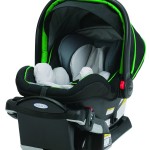
The Chicco KeyFit 30 – Review Here, Buy Here.
The Graco Snugride Click Connect 40 – Review Here, Buy Here.
If you’re interested in infant seats below $200, Chicco and Graco are doing excellent jobs with the KeyFit 30 and the Click Connect 40. The KeyFit 30 is very user friendly and compatible with a range of strollers, including the Bravo, while the Click Connect 40 will allow many children to rear-face well past 1 without needing to switch seats due to its additional height.
Personally, I’m a fan of just starting out with a great convertible so you don’t have to switch later on in order to keep rear-facing, so if I had $200 and a baby on the way, I’d go with either the Head Size 70, Size4Me, or Contender and skip the infant seat stage. However, if that’s not an option or if you need to be able to transport your infant in and out of a vehicle without waking him or her, then these are two great infant seats that won’t break the bank.
The 2 Best Combination / Booster Seats that Forward-Face to 90 pounds and Booster to 120 pounds
The Britax Frontier G1.1 – Review Here, Buy Here.
The Britax Pinnacle G1.1 – Review Here, Buy Here.
The Frontier and the Pinnacle are combination seats, which means they can both be used as forward-facing harnessed seats and as booster seats. Often seats that do one thing well do something else poorly. However, in this case, you’re looking at the two best forward-facing seats and the two best booster seats available in the United States as of this writing. I think that’s pretty cool.
There isn’t another car seat that does either of these jobs (forward-facing or boostering) better than these two seats. I love the Frontier and Pinnacle because if you buy either, it’s pretty much guaranteed to last your child until s/he no longer needs a car seat any more (i.e., when s/he can pass the 5-step test). That’s pretty awesome in my books.
Top 3 Booster Seats with More than 20″ of Shoulder Height
The Clek Oobr – Review Here, Buy Here.
The Maxi-Cosi RodiFix – Review Here, Buy Here.
The Kiddy Cruiserfix Pro – Review Here, Buy Here.
Although the Frontier and Pinnacle are my favorite boosters, if you’re not able to pick either of them up or are on a shorter budget, then your best best will involve the Oobr, RodiFix, and CruisterFix pro. Of these, the Oobr is my favorite; it has a long history of quality and is a solid choice for belt positioning and keeping kids safe until they’re old enough to use the adult seat belt.
If you find the information on car safety, recommended car seats, and car seat reviews on this car seat blog helpful, you can shop through this Amazon link for any purchases, car seat-related or not. Canadians can shop through this link for Canadian purchases.

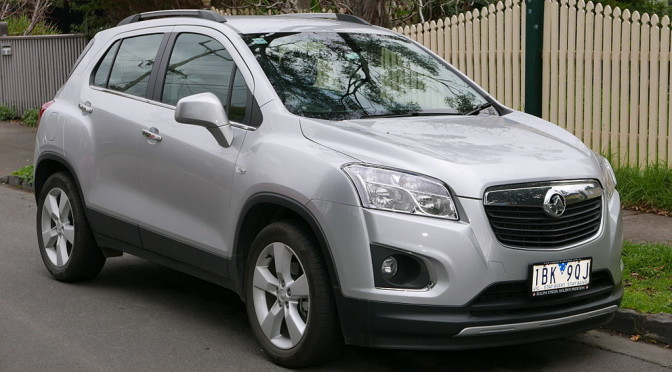


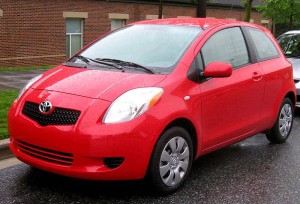
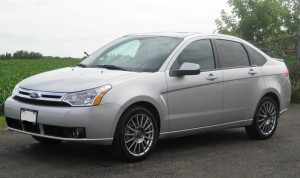
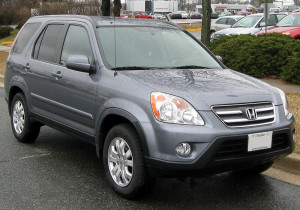 5+ Honda CR-V
5+ Honda CR-V